 W
WAbingdon Abbey was a Benedictine monastery also known as St Mary's Abbey located in Abingdon, historically in the county of Berkshire but now in Oxfordshire, England.
 W
WThe Diocese of Worcester forms part of the Church of England (Anglican) Province of Canterbury in England.
 W
WBardney Abbey in Lincolnshire, England, was a Benedictine monastery founded in 697 by King Æthelred of Mercia, who was to become the first abbot. The monastery was supposedly destroyed during a Danish raid in 869. In 1087, the site was refounded as a priory, by Gilbert de Gant, Earl of Lincoln, and it regained status as an abbey in 1115.
 W
WBarking Abbey is a former royal monastery located in Barking, in the London Borough of Barking and Dagenham. It has been described as having been "one of the most important nunneries in the country".
 W
WBath Abbey is a parish church of the Church of England and former Benedictine monastery in Bath, Somerset, England. Founded in the 7th century, it was reorganised in the 10th century and rebuilt in the 12th and 16th centuries; major restoration work was carried out by Sir George Gilbert Scott in the 1860s. It is one of the largest examples of Perpendicular Gothic architecture in the West Country. The medieval abbey church served as a sometime cathedral of a bishop. After long contention between churchmen in Bath and Wells the seat of the Diocese of Bath and Wells was later consolidated at Wells Cathedral. The Benedictine community was dissolved in 1539 during the Dissolution of the Monasteries.
 W
WBeverley Grammar School is a boys' comprehensive state secondary academy school in Beverley, East Riding of Yorkshire, England. A school may have been founded here about 700 AD and on that basis the school is claimed to be the country's oldest state school and the eighth oldest school overall, but the existence of a school here is not continuous. The present school is a specialist Engineering College and shares a joint Sixth form with Beverley High School. The school has received an 'Outstanding' in Ofsted inspections in 2006, 2008, and in 2010. However it was unable to sustain such a high level record when deemed 'requires improvement' in 2013. The current headteacher is Gavin Chappell, who took over from Gillian Todd in September 2015.
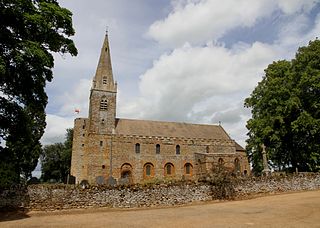 W
WAll Saints' Church, Brixworth, now the parish church of Brixworth, Northamptonshire, England, is a leading example of early Anglo-Saxon architecture. In 1930 the British architectural historian Sir Alfred Clapham called it "perhaps the most imposing architectural memorial of the 7th century yet surviving north of the Alps". It is the largest English church that remains substantially as it was in the Anglo-Saxon era. It was designated as a Grade I listed building in 1954.
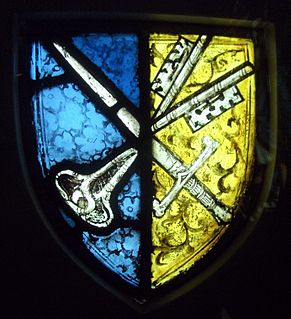 W
WChertsey Abbey, dedicated to St Peter, was a Benedictine monastery located at Chertsey in the English county of Surrey.
 W
WThe Diocese of Hereford is a Church of England diocese based in Hereford, covering Herefordshire, southern Shropshire and a few parishes within Worcestershire in England, and a few parishes within Powys and Monmouthshire in Wales. The cathedral is Hereford Cathedral and the bishop is the Bishop of Hereford. The diocese is one of the oldest in England and is part of the Province of Canterbury.
 W
WThe Diocese of Winchester forms part of the Province of Canterbury of the Church of England. Founded in 676, it is one of the older dioceses in England. It once covered Wessex, many times its present size which is today most of the historic enlarged version of Hampshire and the Channel Islands.
 W
WEly is a cathedral city in Cambridgeshire, England, about 14 miles (23 km) north-northeast of Cambridge and about 80 miles (129 km) by road from London. Æthelthryth founded an abbey at Ely in 673; the abbey was destroyed in 870 by Danish invaders and was rebuilt by Æthelwold, Bishop of Winchester, in 970. Construction of the cathedral was started in 1083 by a Norman abbot, Simeon. Alan of Walsingham's octagon, built over Ely's nave crossing between 1322 and 1328, is the "greatest individual achievement of architectural genius at Ely Cathedral", according to architectural historian Nikolaus Pevsner. Building continued until the dissolution of the abbey in 1539 during the Reformation. The cathedral was sympathetically restored between 1845 and 1870 by the architect George Gilbert Scott. As the seat of a diocese, Ely has long been considered a city; in 1974, city status was granted by royal charter.
 W
WEscomb Church is the Church of England parish church of Escomb, County Durham, a village about 1 1⁄2 miles (2.4 km) west of Bishop Auckland. It is one of the oldest Anglo-Saxon churches in England and one of only three complete Anglo-Saxon churches remaining in England, the others being St Lawrence's Church, Bradford-on-Avon and All Saints' Church, Brixworth. The church is a Grade I listed building.
 W
WGlastonbury Abbey was a monastery in Glastonbury, Somerset, England. Its ruins, a grade I listed building and scheduled ancient monument, are open as a visitor attraction.
 W
WHartlepool Abbey, also known as Heretu Abbey, Hereteu Abbey, Heorthu Abbey or Herutey Abbey, was a Northumbrian monastery founded in 640 CE by Hieu, the first of the saintly recluses of Northumbria, and Aidan of Lindisfarne, on the Headland Estate of Hartlepool now called the Heugh or Old Hartlepool, in County Durham, England.
 W
WHereford Cathedral School is an independent, co-educational day and boarding school for pupils of ages 3 to 18 years, from Nursery to Sixth Form. Its headmaster is a member of the Headmasters' and Headmistresses' Conference. The school's premises are next to Hereford Cathedral in Hereford.
 W
WHexham Abbey is a Grade I listed place of Christian worship dedicated to St Andrew, in the town of Hexham, Northumberland, in Northeast England. Originally built in AD 674, the Abbey was built up during the 12th century into its current form, with additions around the turn of the 20th century. Since the Dissolution of the Monasteries in 1537, the Abbey has been the parish church of Hexham. In 2014 the Abbey regained ownership of its former monastic buildings, which had been used as Hexham magistrates' court, and subsequently developed them into a permanent exhibition and visitor centre, telling the story of the Abbey's history.
 W
WThe King's School, Rochester is an English independent school in Rochester, Kent. It is a cathedral school and, being part of the foundation of Rochester Cathedral, the Dean of Rochester serves as chair of the school's governing body. The school claims to be the second oldest continuously operating school in the world, having been founded in 604 AD.
 W
WThe Diocese of Lincoln forms part of the Province of Canterbury in England. The present diocese covers the ceremonial county of Lincolnshire.
 W
WMalmesbury Abbey, at Malmesbury in Wiltshire, England, is a religious house dedicated to Saint Peter and Saint Paul. It was one of the few English houses with a continuous history from the 7th century through to the Dissolution of the Monasteries.
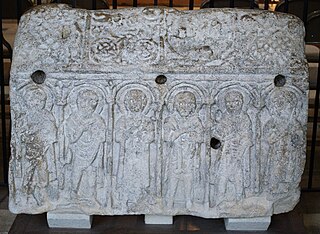 W
WMedeshamstede was the name of Peterborough in the Anglo-Saxon period. It was the site of a monastery founded around the middle of the 7th century, which was an important feature in the kingdom of Mercia from the outset. Little is known of its founder and first abbot, Sexwulf, though he was himself an important figure, and later became bishop of Mercia. Medeshamstede soon acquired a string of daughter churches, and was a centre for an Anglo-Saxon sculptural style.
 W
WThe Minster School, York is an independent preparatory school for children aged 3–13 in York, England. It was founded to educate choristers at York Minster and continued to do so, although no longer exclusively, until in June 2020 it was announced that the school would close at the end of that term.
 W
WThe Abbey Church of Saint Peter and Saint Paul, Monkwearmouth–Jarrow, known simply as Monkwearmouth–Jarrow Abbey, was a Benedictine double monastery in the Kingdom of Northumbria, England.
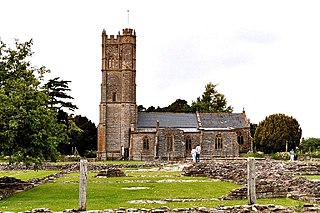 W
WMuchelney Abbey is an English Heritage property in the village of Muchelney in the Somerset Levels, England. The site consists of ruined walls showing the layout of the abbey buildings constructed from the 7th to 16th and the remaining intact Abbott's House. It is next to the parish church in which some of the fabric of the abbey has been reused.
 W
WThe Old Minster was the Anglo-Saxon cathedral for the diocese of Wessex and then Winchester from 660 to 1093. It stood on a site immediately north of and partially beneath its successor, Winchester Cathedral.
 W
WPershore Abbey, at Pershore in Worcestershire, was an Anglo-Saxon abbey and is now an Anglican parish church, the Church of the Holy Cross.
 W
WPeterborough Cathedral, properly the Cathedral Church of St Peter, St Paul and St Andrew – also known as Saint Peter's Cathedral in the United Kingdom – is the seat of the Anglican Bishop of Peterborough, dedicated to Saint Peter, Saint Paul and Saint Andrew, whose statues look down from the three high gables of the famous West Front. Although it was founded in the Anglo-Saxon period, its architecture is mainly Norman, following a rebuilding in the 12th century. With Durham and Ely cathedrals, it is one of the most important 12th-century buildings in England to have remained largely intact, despite extensions and restoration.
 W
WPrinknash Abbey is a Roman Catholic monastery in the Vale of Gloucester in the Diocese of Clifton, near the village of Cranham. It belongs to the English Province of the Subiaco Cassinese Congregation, which is itself part of the worldwide Benedictine Confederation. It is noted for its manufacturing of incense, and is the largest manufacturer of incense in Europe.
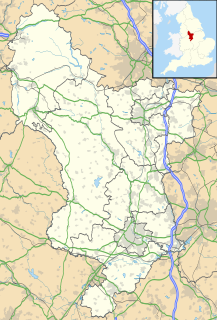 W
WRepton Abbey was an Anglo-Saxon Benedictine abbey in Derbyshire, England. Founded in the 7th century, the abbey was a double monastery, a community of both monks and nuns. The abbey is noted for its connections to various saints and Mercian royalty; two of the thirty-seven Mercian Kings were buried within the abbey's crypt. The abbey was abandoned in 873, when Repton was overrun by the invading Great Heathen Army.
 W
WThe Cathedral Church of St Peter and St Wilfrid, commonly known as Ripon Cathedral, and until 1836 known as Ripon Minster, is a cathedral in the North Yorkshire city of Ripon. Founded as a monastery by Scottish monks in the 660s, it was refounded as a Benedictine monastery by St Wilfrid in 672. The church became collegiate in the tenth century, and acted as a mother church within the large Diocese of York for the remainder of the Middle Ages. The present church is the fourth, and was built between the 13th and 16th centuries. In 1836 the church became the cathedral for the Diocese of Ripon. In 2014 the Diocese was incorporated into the new Diocese of Leeds, and the church became one of three co-equal cathedrals of the Bishop of Leeds.
 W
WThe Royal Grammar School Worcester is a 2–18 mixed, independent day school and sixth form in Worcester, Worcestershire, England. Founded before 1291, it is one of the oldest British independent day schools.
 W
WSt Leonard's Priory, Stamford was a priory in Lincolnshire, England. It was built in Stamford, supposedly on the site of a monastery which was founded by St Wilfrid in 658 and destroyed in the Danish invasion.
 W
WThe Chapel of St Peter-on-the-Wall, Bradwell-on-Sea, Essex, is a Grade I listed building and among the oldest largely intact Christian churches in England; it is still in regular use. It dates from the years 660–662.
 W
WSt Peter's School is a co-educational independent boarding and day school, in the English City of York, with extensive grounds on the banks of the River Ouse. Founded by St Paulinus of York in AD 627, it is the third oldest school in the UK and the fourth oldest in the world. It is part of the York Boarding Schools Group.
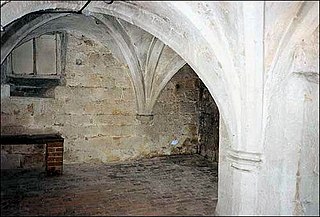 W
WStone Priory was a priory founded at Stone in Staffordshire, England, in about 670 AD. The priory's church was dedicated to Saint Mary and Saint Wulfad, a local seventh-century martyr and supposedly a son of King Wulfhere of Mercia, who ruled from 658 until his death in 675. The mid-15th century Rimed Chronicle of Stone Priory, found at the Priory at the Dissolution of the Monasteries, records the founding legend and the names of the Stafford family patrons up to 1403, and the places of their burials.
 W
WThetford Grammar School is an independent co-educational school in Thetford, Norfolk, England. The school might date back to the 7th century, which would make it one of the oldest schools in the United Kingdom.
 W
WThorney Abbey, now the Church of St Mary and St Botolph, was a medieval monastic house established on the island of Thorney in The Fens of Cambridgeshire, England.
 W
WTynemouth Castle is located on a rocky headland, overlooking Tynemouth Pier. The moated castle-towers, gatehouse and keep are combined with the ruins of the Benedictine priory where early kings of Northumbria were buried. The coat of arms of the town of Tynemouth still includes three crowns commemorating the tradition that the Priory had been the burial place for three kings.
 W
WWenlock Priory, or St Milburga's Priory, is a ruined 12th century monastery, located in Much Wenlock, Shropshire, at grid reference SJ625001. The foundation was a part of the Cluniac order, which was refounded in 1079 and 1082, on the site of an earlier 7th century monastery, by Roger de Montgomery. It is thought to be the final resting place of Saint Milburga, whose bones were reputedly discovered during restoration work in 1101.
 W
WWhitby Abbey was a 7th-century Christian monastery that later became a Benedictine abbey. The abbey church was situated overlooking the North Sea on the East Cliff above Whitby in North Yorkshire, England, a centre of the medieval Northumbrian kingdom. The abbey and its possessions were confiscated by the crown under Henry VIII during the Dissolution of the Monasteries between 1536 and 1545.